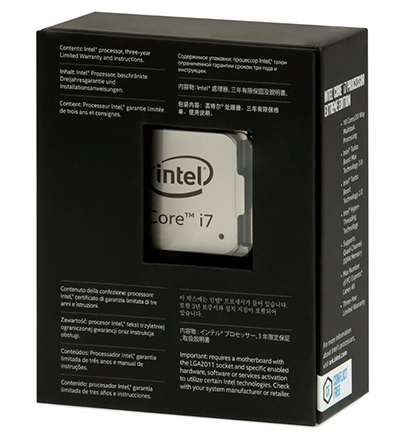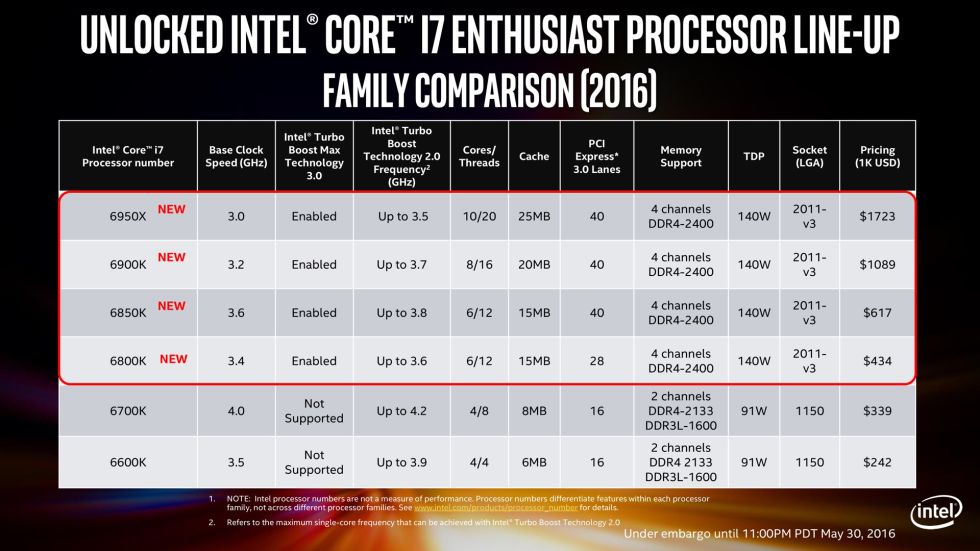Conclusion
This new processor, armed with never-before-seen performance in multi-threaded benchmarks, is also equipped with never-before-seen pricing...Intel holds a commanding performance and market-share lead in virtually all CPU segments. Nowhere is this hegemony more keenly felt than in the high-end desktop (HEDT) space, where wave after wave of Core i7 processors' main goal is to simply improve upon their predecessor. AMD, for the time being, is conspicuous by its absence.
The chip giant usually updates its real enthusiast offerings some time after the mainstream has had its fill. The latest architecture, codenamed Skylake, has been infiltrating the desktop and mobile market for a good year now but is yet to be seen in the HEDT environment.
Rather, following on from the latest round of performance Xeons chips, Intel is updating this niche part of the market with a quartet of Broadwell-based processors that, like their Skylake cousins, adopt the Core i7 6-series nomenclature.
Chief among these performance protagonists is the Core i7-6950X. Intel has increased the core count from eight on the previous generation to 10 in this instance, offering an immediate boost to applications that are greedy for cores and threads. Faster official memory support and a minor clock-for-clock boost by dint of the Broadwell architecture firmly installs the Core i7-6950X as, quite simply, the fastest consumer processor to date.
Yet Intel knows that those who genuinely desire the best-in-breed chips oftentimes have the ability to pay. This new processor, armed with never-before-seen performance in multi-threaded benchmarks, is also equipped with never-before-seen pricing. The cost for such prowess is a wallet-stripping $1,569. This is Intel playing fast and loose with enthusiast's wants and desires.
Yet, looking at it from a whole ecosystem point of view, simply throwing more cores at the PC problem isn't the overarching panacea that Intel would perhaps like you to believe. Games barely benefit from running above a comparatively cheap and cheerful Core i7-6700K Skylake processor, so other than some personal satisfaction of owning the best of cutting-edge CPU hardware, the Core i7-6950X is, for most, financial profligacy at its finest.
There's a new consumer CPU performance king in town, but obtaining an audience with it requires some serious coinage. If you want the best, you had better be prepared to pay, handsomely, for the privilege.

Incredible performance
Impressive energy consumption
Drop-in upgrade to 5960X
How much?
Intel Core i7-6950X
HEXUS.where2buy*
TBC.
HEXUS.right2reply
At HEXUS, we invite the companies whose products we test to comment on our articles. If any company representatives for the products reviewed choose to respond, we'll publish their commentary here verbatim.















